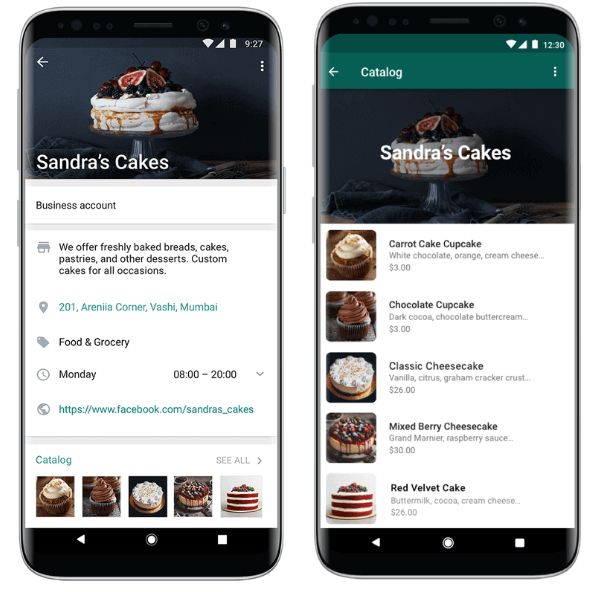If you're in the e-commerce business, you already know that offering an amazing product isn't enough to be successful — or even to survive.
In this day and age, customers pick your brand over your competitor because you offer a better overall customer experience. And an important aspect of that experience is the way you interact with your customer.
Your team has to answer questions fast, have the right knowledge (so no forwarding to colleagues), and the conversations have to take place on the right communication channels. And with 'right', I mean the channels your customers actually enjoy using themselves — not the ones that are convenient to you.
In 2021, this means your e-commerce business needs to be active on WhatsApp. And I have the data to prove it.
Number of active WhatsApp users worldwide

Back in 2020, there were no less than 2 billion (!) active users on WhatsApp. And if the above graph keeps growing at this rate, that number will grow to 3 billion in no time.
In order to help businesses get in touch with this massive audience, WhatsApp launched WhatsApp Business. And trust me when I say that it's a game-changer for any e-commerce business out there.
But first, let's talk about what you can actually do with WhatsApp Business.
What is WhatsApp Business and how does it work?
By using WhatsApp Business, businesses can keep in touch with their customers, sell products and services, and answer questions from customers. It was especially created for small and medium-sized businesses, which is why it can only be accessed by a maximum of four people. With the app, you can send quick replies, organize messages with labels, and create your own product catalog.
When should you use the WhatsApp Business API?
If your company is a bit bigger and needs to manage customer interactions with more than four users, you can use the WhatsApp Business API. With this, you'll also get access to some powerful e-commerce features, such as product messages.
The WhatsApp API has no interface. That's why you need an omnichannel communication platform to use it.
Need some more in-depth information on the WhatsApp Business API and how to use it? We've got you covered.
How to get the most out of WhatsApp Business as an e-commerce company
There are multiple ways to use WhatsApp Business. Some companies use it to just answer questions from their customers and leave it at that.
Others take it a step further and enable a complete e-commerce experience on the channel. From the first time browsing products and asking advice to paying for the product and receiving after-service.
Here's how you can do the same thing.
Add a WhatsApp chat to your website
The first step is showing your (potential) customers that you're available on WhatsApp.
There are multiple ways to make this happen:
- Via a QR code
- Via a click-to-chat link
- Via a website widget
The first two options are easy to execute, but not the most effective — or appealing for that matter. When you want to go for a professional look, you need to add a WhatsApp chat to your website widget. That widget can be placed in either the bottom-right or bottom-left corner of your website, and looks something like this:

The biggest advantage of adding a WhatsApp chat to your website is that you can keep the conversation going after your customer leaves your website. When you're using a regular live chat, this isn't possible. This makes for a better experience for both your customer (doesn't have to sit around and wait) and your team (doesn't have to hurry as much).
Here's a quick explanation on how to add a WhatsApp chat to your website:
Automate the busywork
If you're active in e-commerce customer communication, you know a thing or two about frequently asked questions. By now, you can probably dream most of them:
- "When does my package get delivered?"
- "What does your return policy look like?"
- "Do you still have product x in stock?"
- "What are your opening hours?"
They're valid and important questions to answer, but also eat away at your time. That's why you should try to automate whatever you can automate. Here are some options:
Quick replies
Quick replies can be set up in both the WhatsApp Business app and the API.
They help you to improve response time, save you a lot of typing the same answers over and over, and make it much easier for your team to keep a steady tone of voice.
Need some inspiration? Then check out these 15 life-saving quick reply messages for WhatsApp Business.
Auto-replies
Auto-replies can also be set up in both the application and the API.
These are especially useful to make sure that your customers always get a timely reply to their messages. No matter if you're busy or if they're contacting you outside of opening hours.
For inspiration, you can check out these 18 WhatsApp Business auto-reply message samples.
Rules
Rules are small life hacks that help you automate manual tasks in your inbox. Here are a couple of tasks that can be automated by using rules:
- Forward messages with the words 'return policy' to customer service.
- Label messages as 'urgent' when a customer uses the word 'complaint'.
- Forward a message to the sales team after you labeled it as 'sales'.
You can only use rules by using the WhatsApp Business API.
Chatbots
A chatbot automates conversations with your customers. It can gather leads, answer frequently asked questions, and forward messages to the right teams.

There are two different types of bots: a chatbot and a flowbot.
The regular chatbot simulates a conversation with your customer. It can answer questions by recognizing keywords and replying with pre-filled answers.
A flowbot simulates a conversation by asking multiple-choice questions. This makes it easy to give basic information and forward conversations to the right people or team.
You can only create a WhatsApp chatbot by using the API.
Get organized with labels
The more messages your team receives, the more difficult it gets to stay organized. Who's picking up what?
Using labels helps your team keep a clear overview. A couple of examples of labels you can use are:
- Complaint
- Sales
- Customer service
You can also use labels to segment your customers, which makes it easier to get an understanding of who they are and what drives them.
Labels can be used by users of the WhatsApp Business app and API.
Integrate WhatsApp with your e-commerce tools
By using the WhatsApp Business API via a platform like Trengo, you can integrate WhatsApp with your existing e-commerce tools. This creates an ideal WhatsApp e-commerce workplace.
For instance, you can connect WhatsApp with Shopify, Picqer, Mailchimp, Woocommerce, Magento, and more tools. This enables your team to manage customer communication in one view, without constantly having to click back and forth between all their software.
For instance, if you're trying to help a customer in a WhatsApp chat and need to look up their order number, you can easily do that right within Trengo. This makes for a better experience for both your customer and your team.
Display your products in a catalog
Next, it's time to make sure that people who talk to you via WhatsApp don't need to click back-and-forth between WhatsApp and your website to buy a product. You want to enable them to buy without having to leave the conversation.
The first step is to create a WhatsApp product catalog. This is a feature that allows you to display and sell your products inside of WhatsApp. You can currently add up to 500 products.
When a customer clicks on your WhatsApp Business profile, they will first get some basic information on your company. When they scroll further down, they'll get to see your products. Here's how that looks:

Here are a couple of best practices to keep in mind while setting up your catalog:
- Choose clear and appealing pictures
- Keep the descriptions short — no need to mention price there
- Add a product code to keep track of sales
- Make sure you stick to the WhatsApp Commerce policy
When you have the catalog fully set up, it's time to start using it in conversations with product messages.
Recommend products with product messages
With the WhatsApp Business API's latest release, you can now also send customers products from your catalog inside of a chat.
Here's how that looks:

Convenient, right? Before, you would have to send your customer a link to the product. Then they would have to go there to look at the product and click back to WhatsApp to continue the conversation.
With a product message, you get one step closer to simulating an in-store conversation. The entire journey can take place within WhatsApp, from the first touch to actually buying a product and receiving after-service.
Send WhatsApp Business notifications
After a customer has bought a product, you can send them notifications about their order. Often, businesses still send these via SMS or email.
You can send notifications by sending WhatsApp Business message templates. This can only be done with the API and have to be approved by WhatsApp. Messages can only be approved if they are written according to their commerce policy.
The reason you have to use a message template is that WhatsApp is trying to prevent businesses from spamming their customers.
Luckily, you can personalize these templates. Here's an example of how that would look like for an e-commerce company:
"Hey [name customer]! Thanks for ordering at Trengo. We have packed up your [product] and expect it will be delivered by [date and time]. If you have any questions at all, feel free to shoot us a message."
Further reading
That's all you need to know to start using WhatsApp Business for your e-commerce business. If you'd like to read more about WhatsApp Business, check out these articles:




.png)











